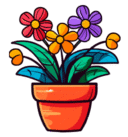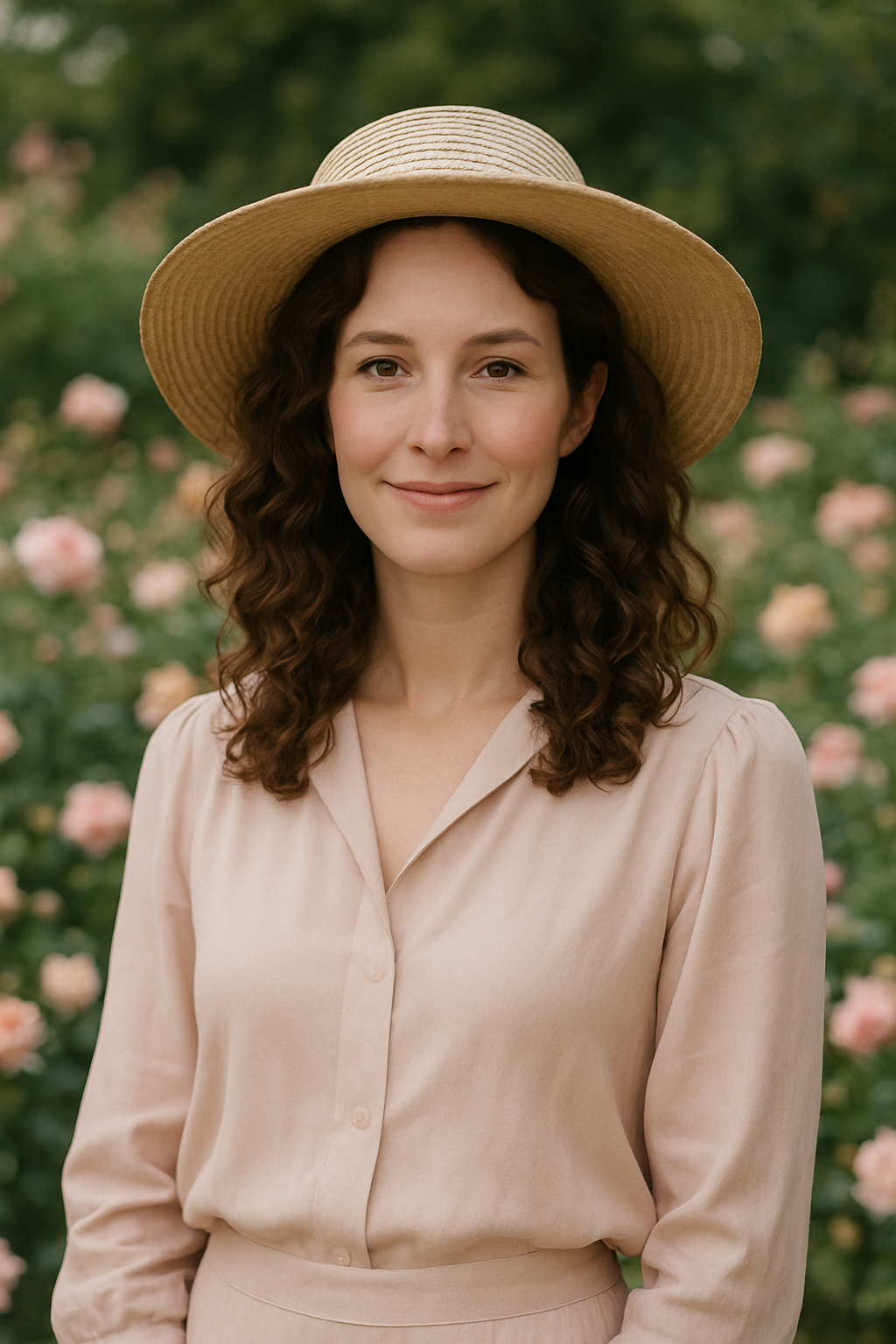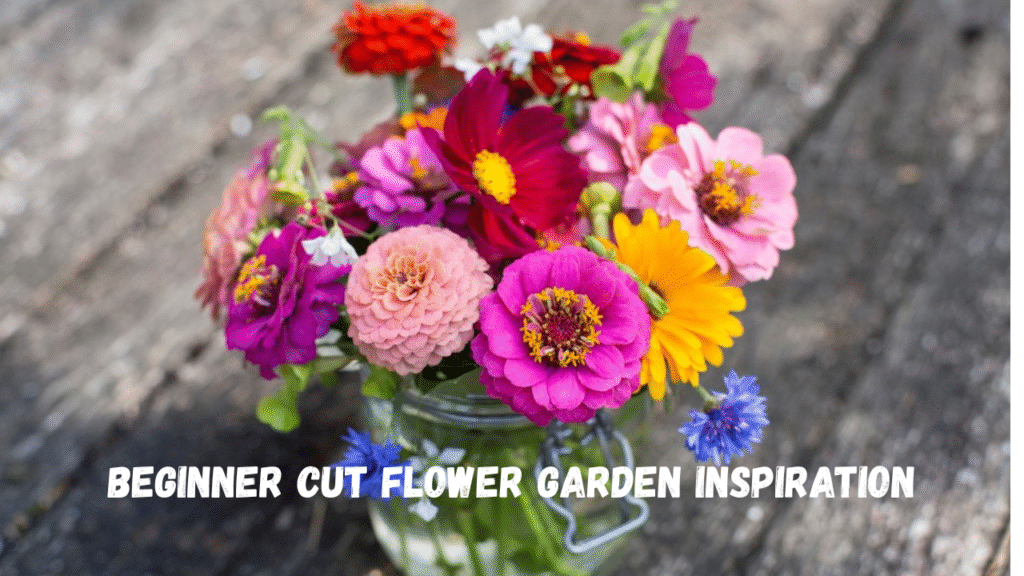
If you’re dreaming of fresh, hand-picked blooms from your very own garden but aren’t sure where to start, you’re not alone. I once stood in the same place—hopeful but confused, holding seed packets and wondering, “Can I really do this?” The answer is yes. You don’t need perfection. You just need a sunny spot, a little patience, and the willingness to take that first small step.
This guide is everything I wish someone had told me when I started my first cut flower garden. No jargon. No pressure. Just clear, kind guidance and personal tips from my own beginner journey.
What Is a Cut Flower Garden? (And Why It’s Different From Regular Gardening)
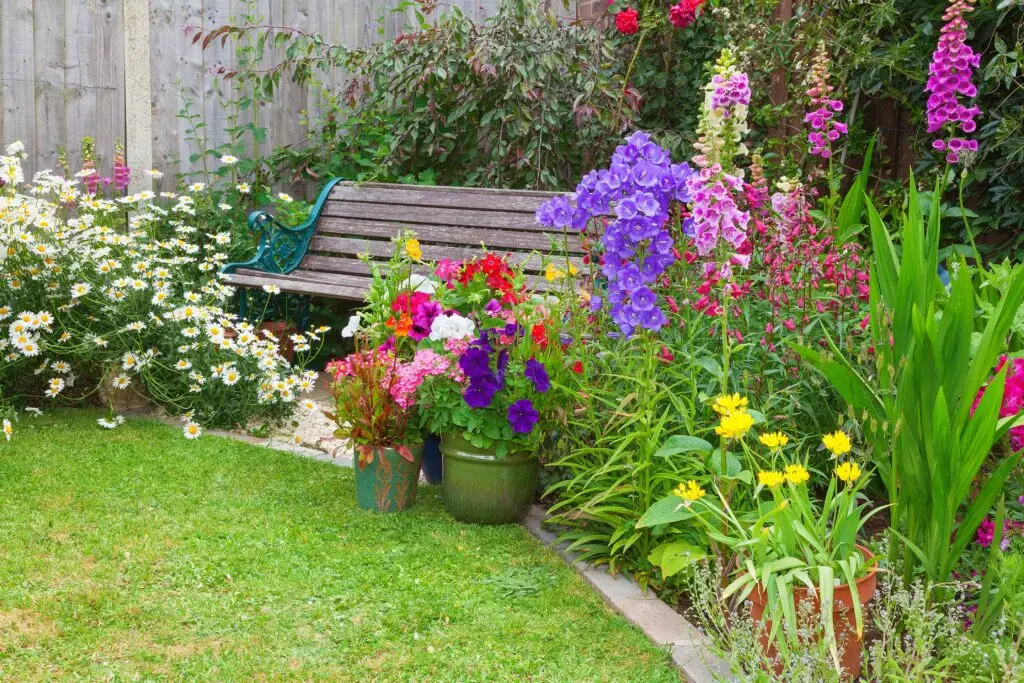
Before I grew one, I assumed a cut flower garden was just a pretty bed of flowers. But I soon learned it’s much more intentional. Unlike decorative flower beds, cut flower gardens are grown specifically for harvesting blooms to bring indoors, gift to others, or arrange into vases.
Every plant has a job: bloom often, bounce back after cutting, and bring joy beyond the garden. You’ll grow varieties that thrive when cut regularly, produce long stems, and offer long vase life.
Key Differences from Traditional Gardening
- Tighter spacing to maximize blooms
- Flowers selected for productivity, not just looks
- Frequent harvesting to encourage more growth
- Practical layout, not just design aesthetics
Personal Tip: I was nervous to cut my first blooms—worried I’d ruin the garden. But cutting actually helps flowers grow more. It’s a beautiful cycle!
Choosing the Right Spot for Your Cut Flower Garden
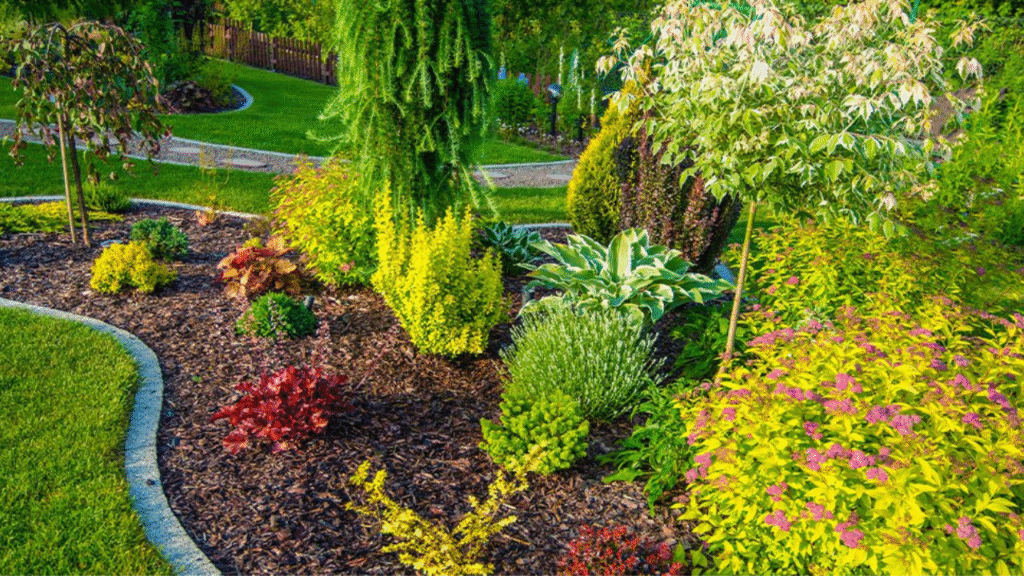
Location truly matters. My first garden was near the house for easy watering, but I didn’t realize it lost sun by midday. Some flowers survived; others didn’t. Lesson learned.
What to Look For:
- Sunlight: 6+ hours of direct sun daily. Morning sun is best.
- Drainage: Water should drain within a few hours. If it pools, amend soil with compost.
- Accessibility: Close to a hose or your back door makes it easier to maintain.
Pro Tip: Track sunlight for a full day before choosing your spot. What looks sunny at 10 AM might be shady by noon.
Soil Basics (Without Overthinking It)
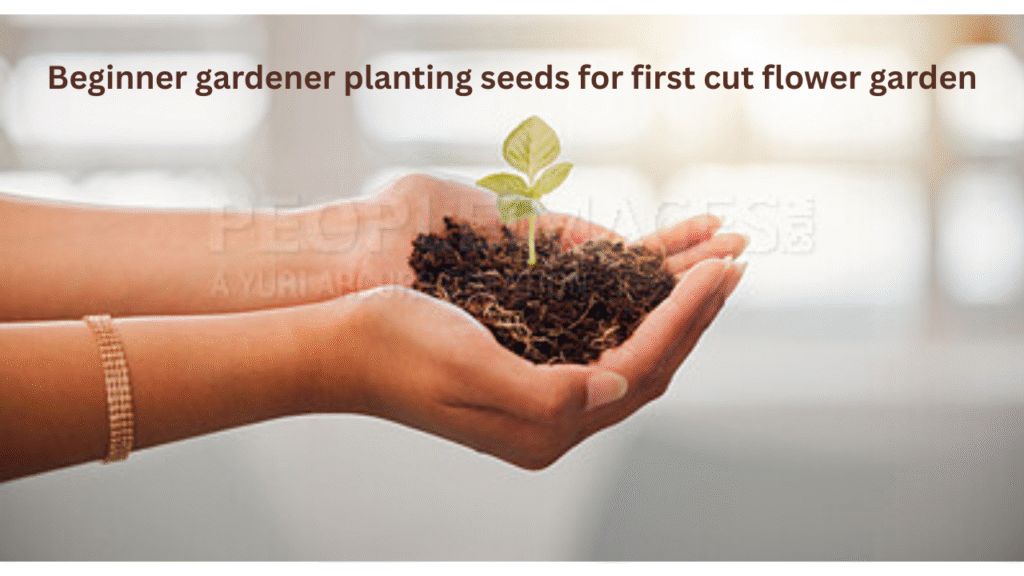
You don’t need fancy tests or perfect soil. I started with dense clay and added compost—and my zinnias still bloomed like champions.
Keep It Simple:
- Use garden soil mixed with compost
- Add a light organic fertilizer if desired
- Focus on looseness and drainage, not lab reports
Pro Tip: If you squeeze a handful of damp soil and it crumbles easily, it’s good. If it forms a hard ball, improve drainage.
The Easiest Flowers to Grow in Your First Garden
Choosing beginner-friendly flowers saves time, money, and frustration. These six gave me the most joy with the least stress:
Top 6 Beginner Flowers:
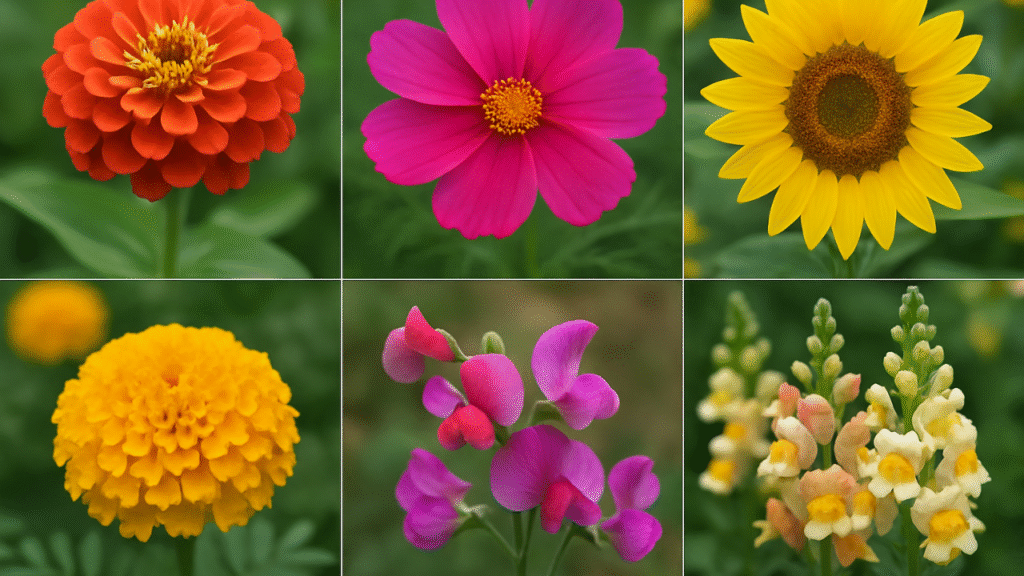
- Zinnias: Fast growers, constant bloomers
- Cosmos: Airy, self-seeding, low-maintenance
- Snapdragons: Elegant spikes, vase-friendly
- Marigolds: Pest-resistant, long-blooming
- Sunflowers: Dramatic height and beauty
- Sweet Peas: Fragrant, climbing charm
Which bloomed first for me? Zinnias! Their bright petals were the first reward of my efforts.
Starting from Seed: Indoors vs. Outdoors
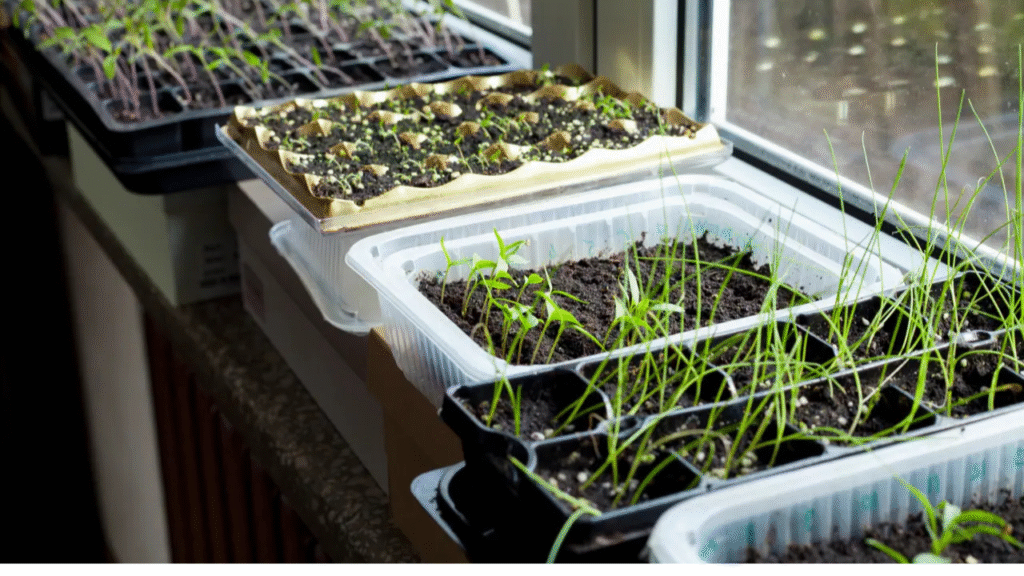
Starting from seed can feel overwhelming, but it doesn’t have to be. Here’s what worked for me:
Indoor Starting:
- Use seed trays with drainage
- Plant seeds twice as deep as their size
- Cover with clear lid/plastic wrap
- Keep in warm spot with indirect light
- Remove cover after sprouting
Direct Sowing (Outdoors):
- Works well for zinnias, marigolds, sunflowers
- Less effort but depends on weather and soil
Mistake I made: I overwatered my first indoor seeds and drowned them. Now I water gently and keep a spray bottle nearby.
Watering, Spacing, and Support Tips
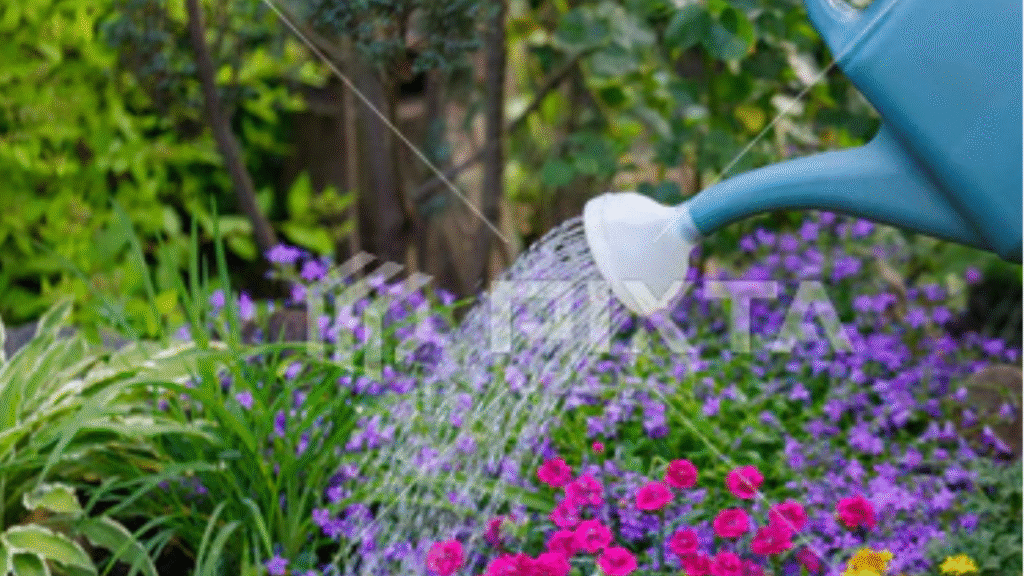
Watering:
- Water in the early morning to avoid disease
- Keep soil moist, not soggy
Feeding:
- Use a balanced fertilizer every 3-4 weeks
- Avoid overfeeding—more isn’t better
Spacing & Support:
- Don’t overcrowd—it causes weak stems and disease
- Use bamboo stakes or cages for tall flowers
Common Mistake: I planted everything too close together. It looked lush, but airflow was poor and stems flopped.
Harvesting and Enjoying Your Flowers
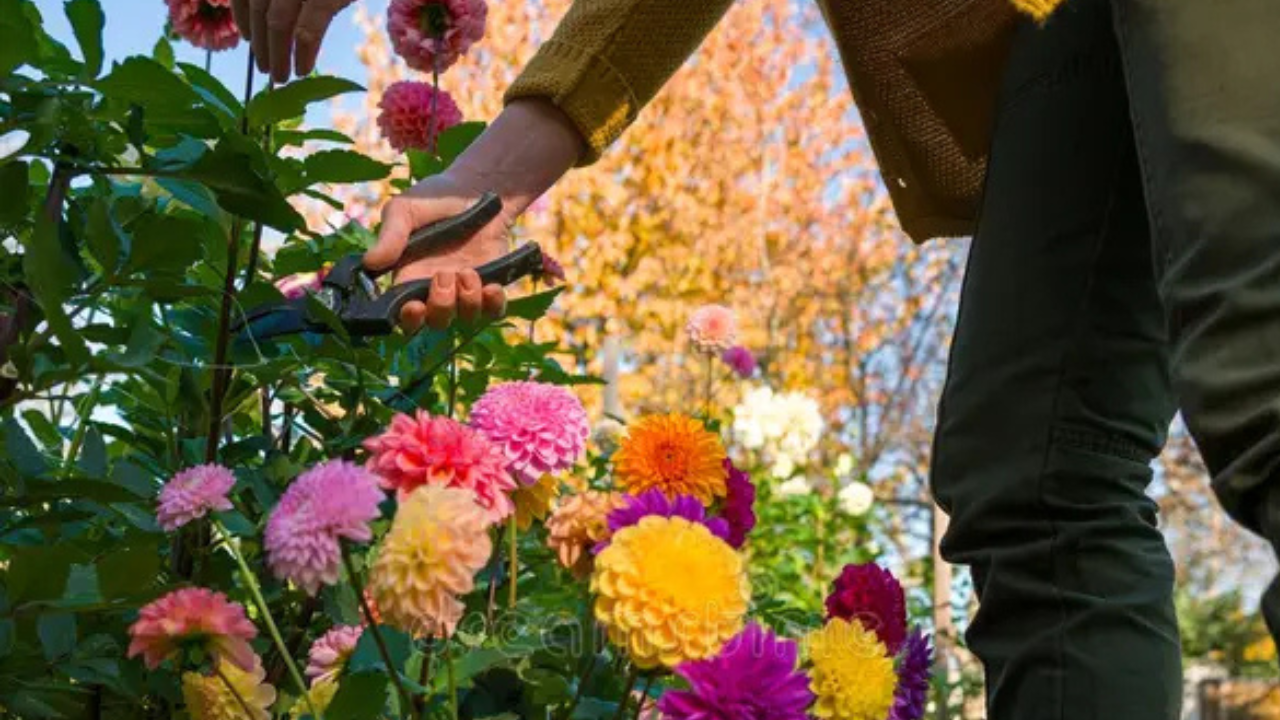
When to Harvest:
- Early morning, after dew dries
- Use sharp, clean scissors
- Cut stems at an angle
How Much to Cut:
- Don’t remove more than 1/3 of the plant
- Leave foliage to support continued growth
Vase Life Tips:
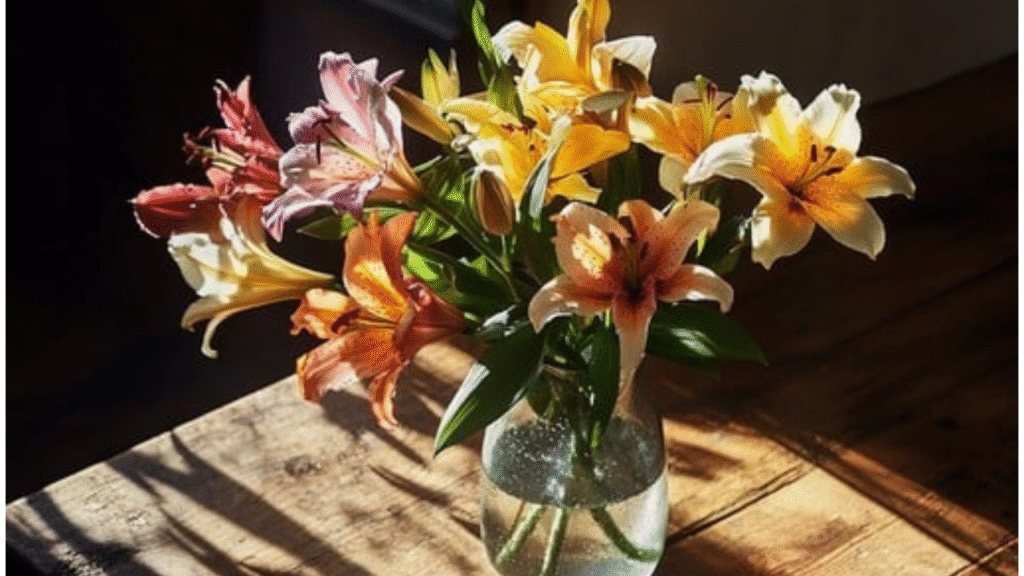
- Change water every 2–3 days
- Trim stems slightly each time
- Keep out of direct sunlight indoors
First bouquet memory: My first bouquet was zinnias and cosmos. It wasn’t perfect, but I couldn’t stop smiling. That joy made it all worth it.
Gentle Reminders for Your First Season
- Progress over perfection: Some flowers may fail, and that’s okay.
- Celebrate small wins: One bloom is a victory.
- Keep learning: Every season brings new lessons.
- Enjoy the process: Watering in the morning, touching the soil, watching things grow—this is the real magic.
Pro Tip: Take photos weekly. Watching your garden grow over time builds confidence.
Final Thoughts + What to Do Next
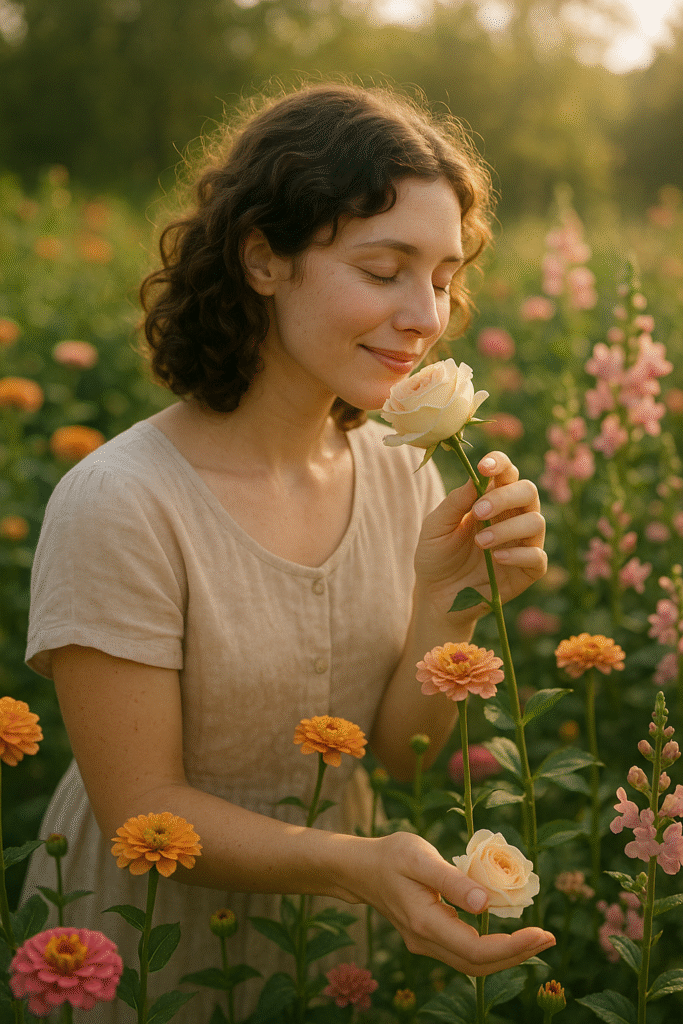
Your garden won’t be perfect—and it doesn’t have to be. What matters is that you started. You planted a seed of beauty, care, and joy.
Every flower that blooms is a quiet reminder: you did this.
Want More Help?
Download my free [Beginner’s Garden Layout Guide PDF]
Read: [Top 10 Cut Flowers That Last in a Vase]
💬Leave a comment below sharing your favorite flower!
FAQ (Frequently Asked Questions)
Q1: How much sunlight do cut flowers need?
Most need 6+ hours of direct sunlight. Morning sun is especially helpful.
Q2: Can I start seeds indoors?
Yes! It helps control temperature and speeds up germination for some flowers like snapdragons.
Q3: How often should I water?
Keep soil consistently moist. Early morning watering works best.
Q4: When is the best time to harvest flowers?
Cut in the early morning after dew dries. Use clean, sharp scissors and cut stems at an angle.
Written by Flora Lane
Your gentle guide to growing blooms that brighten your day 🌸
